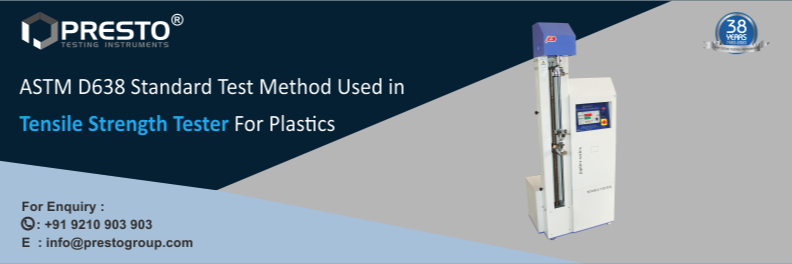

The ASTM D638 test method is used to check the plastic strength including the tensile properties. The test method is used for tensile strength tester for plastic film. The data collected from the tensile test is helpful for the research and development as well as in plastic engineering. Prior to using the test method, it is essential to refer material specifications.
The specimen preparations affect the tensile properties with speed and testing condition. The method of preparation of the material is important, besides the type of material. When comparative tests of materials are essential, ensure sample preparation is performed using the same method. The sample preparation, handling, and treatment must be carried out with complete uniformity.
The tensile properties are evaluated to use in plastic engineering. However, some plastic material is highly sensitive to strain and environmental conditions, thus, all test methods cannot be considered valid for certain applications, and reliable estimation cannot be made. Due to sensitivity to strain and environment, testing may need to be performed over an extensive load-time scale (such as impact and creep) and various environmental conditions if tensile properties are meant for engineering design purposes.
The test method determines the tensile properties of the dumbbell shaped plastic test specimens tested under specified conditions of temperature, humidity, pretreatment, and testing device speed. The standard test method does not cover all physical procedures. The tensile strength tester for plastic complies with the ASTM D638 standard and efficiently determines the tensile strength test of the plastic materials.
Related Blogs

UV Chamber simulates sunlight to test material durability against UV rays, helping ensure long-term quality and resistance to environmental damage.

Salt spray test checks corrosion resistance of materials using a salt spray chamber. Essential for quality control in coatings, metals, and finishes.

Hot Air Oven uses dry heat for sterilizing glassware and metal tools, while an Autoclave uses steam under pressure—ideal for liquids and medical items.